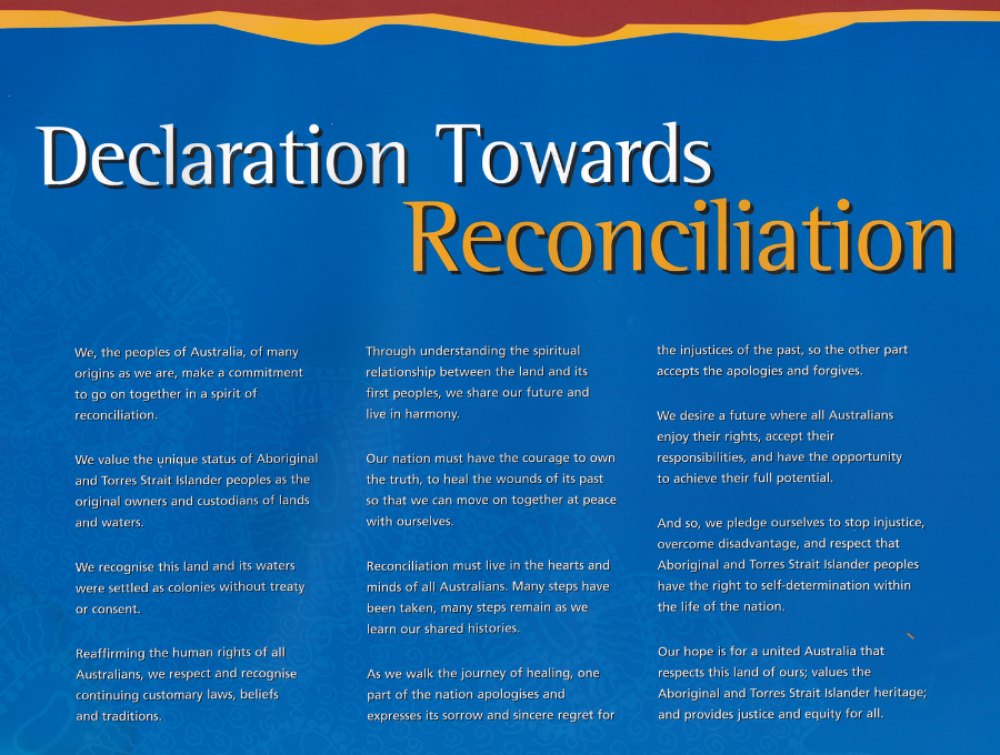At Corroboree 2000, the Council for Aboriginal Reconciliation presented two documents: the Australian Declaration Towards Reconciliation and the Roadmap for Reconciliation, to guide the reconciliation process past the year 2000.

Australian Declaration Towards Reconciliation
We, the peoples of Australia, of many origins as we are, make a commitment to go on together in a spirit of reconciliation.
We value the unique status of Aboriginal and Torres Strait Islander peoples as the original owners and custodians of lands and waters.
We recognise this land and its waters were settled as colonies without treaty or consent.
Reaffirming the human rights of all Australians, we respect and recognise continuing customary laws, beliefs and traditions.
Through understanding the spiritual relationship between the land and its first peoples, we share our future and live in harmony.
Our nation must have the courage to own the truth, to heal the wounds of its past so that we can move on together at peace with ourselves.
Reconciliation must live in the hearts and minds of all Australians. Many steps have been taken, many steps remain as we learn our shared histories.
As we walk the journey of healing, one part of the nation apologises and expresses its sorrow and sincere regret for the injustices of the past, so the other part accepts the apologies and forgives.
We desire a future where all Australians enjoy their rights, accept their responsibilities, and have the opportunity to achieve their full potential.
And so, we pledge ourselves to stop injustice, overcome disadvantage, and respect that Aboriginal and Torres Strait Islander peoples have the right to self-determination within the life of the nation.
Our hope is for a united Australia that respects this land of ours; values the Aboriginal and Torres Strait Islander heritage; and provides justice and equity for all.
Read the Roadmap for Reconciliation.
Read the full report presented by CAR to Prime Minister John Howard and the Australian Parliament on 4 December 2000.
Read more about the two-day Corroboree 2000 events.



